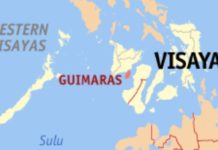
DEPARTMENT of Education’s (DepEd) Department Order 13, Series of 2017 sets the “Policy and Guidelines on Healthy Food and Beverage Choices in Schools and in DepEd Offices.” Is this being implemented?
The Order is a detailed guideline promoting healthy eating habits, especially among our young learners, by restricting the marketing, sale and consumption of food and beverage products that are too fat, too sweet or too salty. If effectively enforced, this policy issuance will go a long way in curbing both malnutrition and obesity among our children – which can severely affect their growth and development – while promoting the regular intake of foods and drinks that can make them go, grow and glow.
The policy specifically enumerates healthier food and beverage choices, introduces a system of categorizing locally available food and drinks. It also provides guidance in the marketing and sale of food and drinks in schools and DepEd offices, including food items for school feeding programs.
The guidelines, for instance, provides a list of food and beverages in the green, yellow and red categories. Those listed in the green category should always be available in school canteens. Those classified as yellow should be served carefully, and those categorized as red are not recommended in the canteen menu.
Examples of food and drinks in the green category: unsweetened milk, safe and clean water, fresh buko water, rice, corn, whole wheat bread, cassava, boiled sweet potato, boiled saba, boiled peanuts, suman, puto, fishes, shellfish, small shrimps, lean meats, chicken without skin, nuts, eggs and fresh fruits in season.
Examples of food and drinks in the yellow category: 100 percent fresh fruit juices, fried rice, bread, biscuits, banana cue, camote cue, turon, maruya, pancakes, waffles, champorado, pancit, arroz caldo, sandwiches, processed foods (subject to evaluation of saturated or transfat and sodium content), stir-friend vegetables.
Examples of food and drinks in the red category: soft drinks, alcoholic drinks, sports waters, sports drinks, flavored mineral water, energy drinks, sweetened waters, powdered juice drinks, any products containing caffeine, any processed fruit/vegetable juice with added sugar of more than 20 grams or 4 teaspoons per serving, any jelly, ice crushes and slushies, any ice cream, ice drops and ice candies, cakes and slices, donuts, sweet biscuits and pastries, chocolates, hard/chewy candies, chewing gums, marshmallows, lollipops, yema, French fries, bicho-bicho, instant noodles, all types of heavily salted snacks such as chips or chichiria, chicharon, chicken skin, bacon, deep-friend foods including fish balls and kikiams, canned fruits in heavy syrup, sweetened fruits, deep-fried vegetables.
We want to promote a healthy diet and positive eating behavior. Yes, we should provide a healthy eating environment to our learners. A healthy citizenry is a must to achieve national progress.





